Discover the scary mystery about the most dangerous 'cold-blooded killer'
With scary form and possessing lethal venom in an instant, cold-blooded assassins are horrifying obsessions for people.
They are considered to be the most refined and hearing animals in the natural world. Besides, they also possess many horrifying secrets that people do not know.
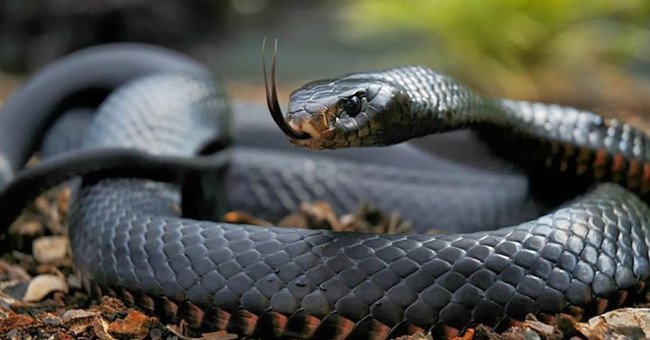
Black Mamba - The horrible "nightmare" of Africans.
According to scientists, there are about 2,900 different species of snakes in the world, of which only 375 are deadly venomous.
Snakes are the most common carnivores in nature
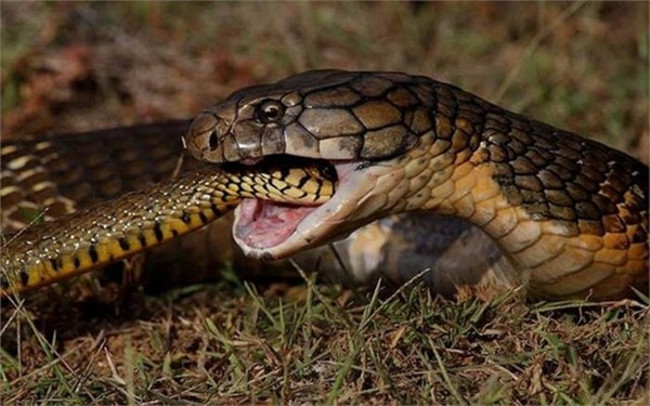
In the natural world, is the most common carnivore in nature. They can even eat meat, even if they are bigger than it.
When hungry, they can use the advantages of body, venom, aggression and superior speed to attack snakes. Then, he used his jaw to grab and use his spine to squeeze, pulling the prey in.
When the prey has settled in the abdomen, the snake begins secreting secretions to reduce stomach pressure and help digest the prey easily.
Snakes can eat their whole flesh
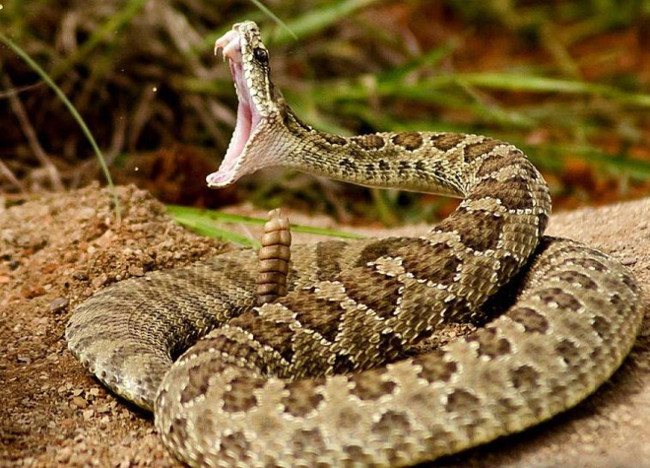
The scary look of rattlesnake.
The rattlesnake snakes living in the Americas eat eggs that are incapable of hatching and weak baby snakes. Because after birth, the mother snake is exhausted of energy so they cannot risk hunting. Eating eggs and young animals helps the mother rattles to regain their strength to continue the next birth process.
Some snakes can still live when fasting for months
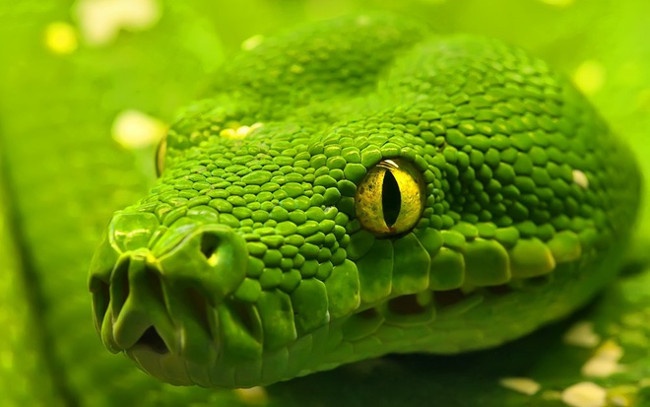
South American green hornbeam.
Like pythons, snakes can survive without eating for months. Because they can slow down metabolism by up to 70%.
Besides, after swallowing huge prey, they digest all the parts of the prey (such as bone, hair) to limit the excretion to accumulate the most energy for the "fasting" period. ".
Snakes kill 100,000 people every year
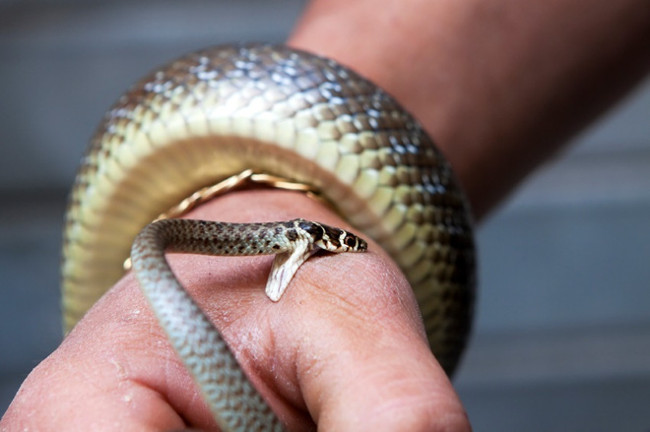
100,000 people die each year and 400,000 are disabled for life because of snake bites .
100,000 people die each year from being bitten by poisonous snakes (accidentally or attacking) and up to 400,000 bitten people lead to lifelong disability.
Some snakes with the habit of feeding near people's homes have accidentally attacked people or defend themselves when they think that humans are threatening their survival.
Africa, Asia are two of the places with the most dead snake bites in the world. In particular, the rate of death when bitten by Black Mamba (in Africa) is 100%.
Titanoboa: The "most terrible" snake "monster" on Earth
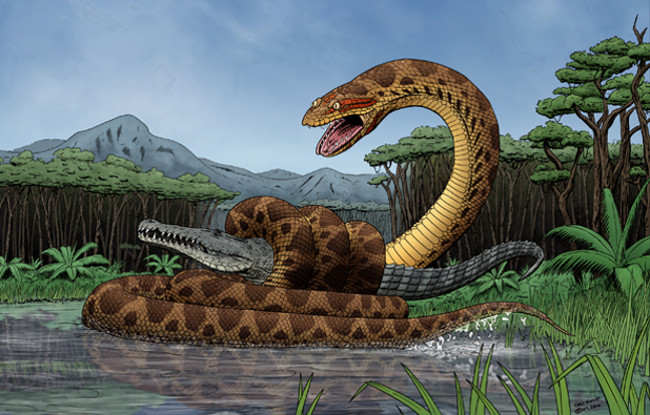
Titanoboa can "cup sweet" giant crocodiles.
According to archaeologists, the giant python Titanoboa lived 60 million years ago as the largest, longest and heaviest snake ever recorded in Earth's history. This giant monster is about 13 meters long, weighs over 1,000 kg and is 1 meter wide at its thickest point.
Snakes can feel the heartbeat
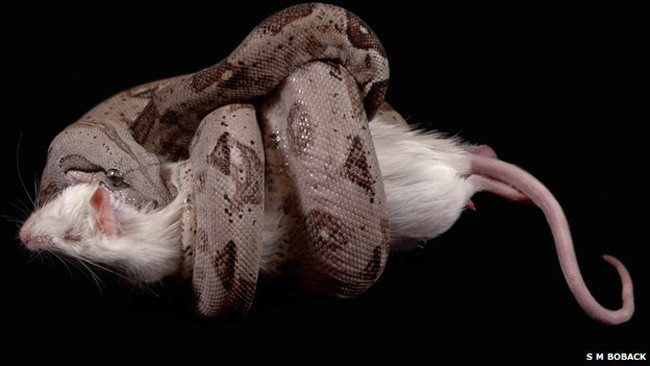
Scientists found that snakes "around " the time needed to kill a prey, because they sense the victim's heartbeat and only let go when the prey's heart stops beating.
Because the prey process consumes a lot of energy. Therefore, this is a very important ability to help predators balance the need for food with the energy they spend to squeeze the suffocating prey.
Accumulate venom from prey
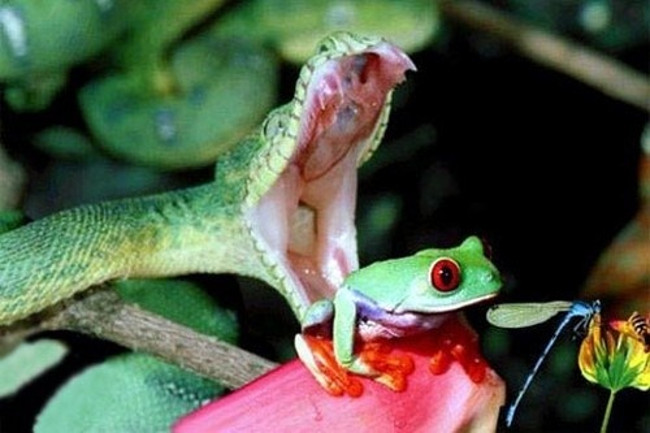
Japanese cobra accumulates venom from poison frogs.(Photo: Wonderlist)
The Japanese tiger snake - Yamakagashi has no venom but you can still die by a bite of this reptile. Nature is very fond of this species of serpent as it gives them the ability to accumulate venom from their prey, specifically the poison frog .
When attacking and swallowing frogs, the Yamakagashi tiger snakes store venom in two lines behind the neck. When fighting enemies or hunting, venom is transferred to the fangs of Japanese tiger snakes.
If a snake is bitten by a snake, the victim will have a heart attack, difficulty breathing and can die immediately afterwards.
You should read it
- The horrifying secret about the scary 'cold blood assassin' in nature is revealed
- Art 'stealth' masters to hunt the desert snakes
- There are 50 venomous snakes, this is the most unique snake on the planet
- Cobra snakes its head in a beer can and an unexpected ending
- At the end of the battle of death, the poisonous tiger was swallowed by the king's snake
- T-rex dinosaur confronts Titanoboa, the largest giant python in Earth's history
- 'Snake kingdom', where snakes go back into flocks in Vietnam
- The civet jumps and pulls the poisonous serpent corpse on the tree to eat meat
May be interested
- Top phones named Flagship killer in 2022
 flagships are high-end phones with leading new features and technologies, and they don't come cheap. meanwhile, flagship killers are phones with similar hardware to flagships but at a much cheaper price.
flagships are high-end phones with leading new features and technologies, and they don't come cheap. meanwhile, flagship killers are phones with similar hardware to flagships but at a much cheaper price. - Causes and remedies of limb cold in winter
 in the winter, your limbs are still numb even with thick socks and gloves or are incubated for an hour in a warm blanket. that feeling is really uncomfortable, affecting daily life and work.
in the winter, your limbs are still numb even with thick socks and gloves or are incubated for an hour in a warm blanket. that feeling is really uncomfortable, affecting daily life and work. - The 15 most dangerous roads on the planet make you 'sweaty'
 isn't it better than the leisurely glide of the countryside roads, across the vast fields and the savanna steppe? on the bright side page, the list of the 15 most dangerous roads in the world makes people sweat cold.
isn't it better than the leisurely glide of the countryside roads, across the vast fields and the savanna steppe? on the bright side page, the list of the 15 most dangerous roads in the world makes people sweat cold. - Discover the mystery of dangerous chemical weapons in ancient war
 historically, ancient wars have relied heavily on manpower and tactics. but during that period, people also knew based on the things in nature to create some dangerous weapons. they are used as biological weapons causing terrible consequences for humans.
historically, ancient wars have relied heavily on manpower and tactics. but during that period, people also knew based on the things in nature to create some dangerous weapons. they are used as biological weapons causing terrible consequences for humans. - Video: Killer whale battle great gray whale, who is the sea king?
 a herd of killer whales attacked the mother of the gray whale. their target is the protein tongue of a baby gray whale.
a herd of killer whales attacked the mother of the gray whale. their target is the protein tongue of a baby gray whale. - Is APT Targeted Attack Really Scary?
 apt targeted attack is really complex but not as scary as we think, zero-day vulnerabilities (unknown and unpatched) used in apt are dangerous but not hard to find.
apt targeted attack is really complex but not as scary as we think, zero-day vulnerabilities (unknown and unpatched) used in apt are dangerous but not hard to find. - Latest Survive The Killer Code and How to Enter Code
 survive the killer code to get knives, money, exp and more in the game. this will help you achieve the game content easily without spending much time in the game.
survive the killer code to get knives, money, exp and more in the game. this will help you achieve the game content easily without spending much time in the game. - List of the most dangerous insects in the world
 mosquitoes, wasps, ants ... are some of the most dangerous insects in the world. despite their small size, these insects are extremely dangerous, when they are infested with disease or venom that kills.
mosquitoes, wasps, ants ... are some of the most dangerous insects in the world. despite their small size, these insects are extremely dangerous, when they are infested with disease or venom that kills. - Cause and remedy error on hot and cold water plants
 if the hot and cold water plants have water leaks, water reflux, water that is not hot / cold, loud noise, please consult immediately how to fix the water heater error below.
if the hot and cold water plants have water leaks, water reflux, water that is not hot / cold, loud noise, please consult immediately how to fix the water heater error below. - Very rare white killer whales found
 an extremely rare, missing all-encompassing albino whale of four years has reappeared off the russian kuril islands.
an extremely rare, missing all-encompassing albino whale of four years has reappeared off the russian kuril islands.










 Stunned with images of three major storms in the ocean recorded by the ISS space station
Stunned with images of three major storms in the ocean recorded by the ISS space station Not the fireflies, the new carnivores are the glowing ones in this cave
Not the fireflies, the new carnivores are the glowing ones in this cave Deadly detection: Thunderstorms bring mercury to Earth
Deadly detection: Thunderstorms bring mercury to Earth Like humans, fish also have arthritis?
Like humans, fish also have arthritis? Marvel at red-blooded animals in Vietnam
Marvel at red-blooded animals in Vietnam New experiment: Aggressive, aggressive Panama red frogs are more than green frogs
New experiment: Aggressive, aggressive Panama red frogs are more than green frogs